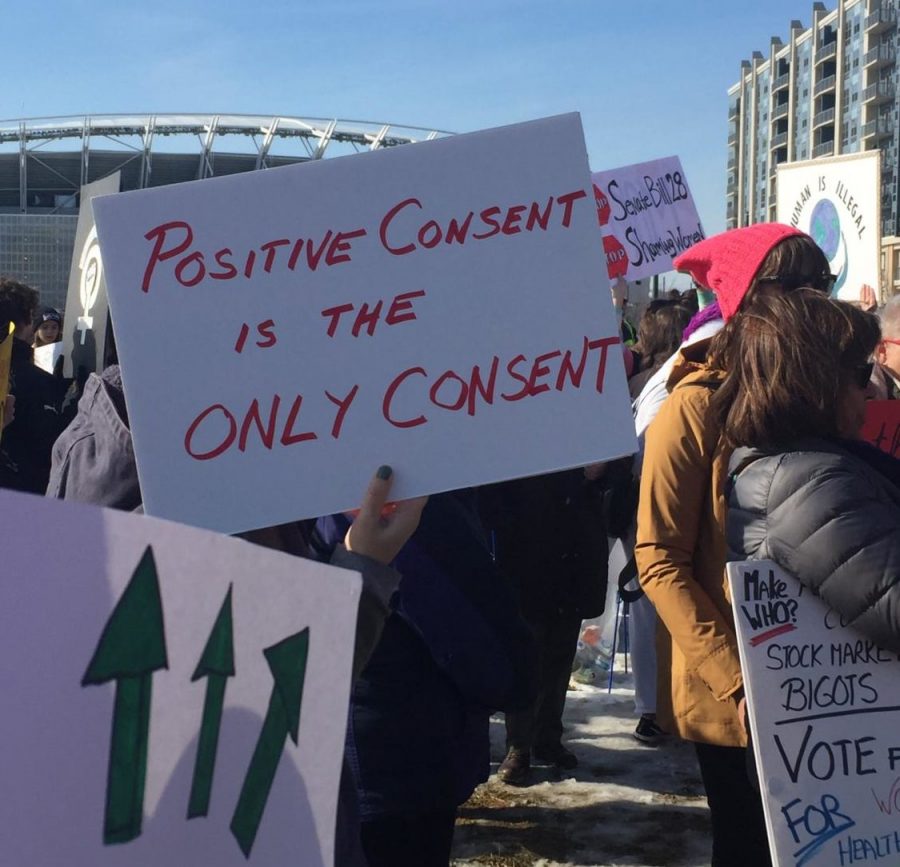Exhibit displays victims’ clothing
CONSENT. A participant in Cincinnati’s Women’s March holds a sign that reads: “Positive consent is the only consent.” Sexual assault stories are being shared worldwide via the #MeToo movement, and an exhibition in Belgium featuring victims’ clothing worn at the time they were assaulted seeks to cease the belief that clothing determines consent. “I believe in the power and rights of women, and no matter what someone is wearing, it does not excuse another person’s vile actions,” said Thea Ferdinand, 12.
January 23, 2018
With the rise of the #MeToo movement, the topic of sexual assault and, coincidentally, consent is central to more and more discussions all over the world.
At the Maritime Community Centre in Brussels, a new exhibition titled ‘Is it my fault?’ features victims’ clothing worn at the time they were sexually assaulted. It is a joint project courtesy of Belgian authorities and the University of Kansas.
By displaying the sweatpants and skirts worn by women and children who were brutally assaulted, organizers hope to put an end to victim blaming and emphasize that no matter what a person is wearing, they are not “asking for it.”
Despite popular belief that victims dressed provocatively are more susceptible to such attacks, the display features everyday clothing and even a child’s Hello Kitty shirt.
“Some victims begin to ask whether they were in part responsible for what happened to them either as a result of what they were wearing or as a result of how they behave when they are out,” said Liesbeth Kennes, an education and support worker for the victim support group CAW, in an interview with VRT1 radio.
Victim blaming is common following cases of assault, and the public is quick to ask what a person was wearing, where she was going, what she was doing at the time. But rarely do outsiders stop and point to the perpetrator, which ultimately causes the victims themselves to believe they were in the wrong.
According to a poll by “The Washington Post,” approximately six out of ten women said it was commonly believed that women who go to parties wearing provocative clothing are “asking for trouble.”
While it is important to be conscious of one’s surroundings when walking home in the dark or hanging out in an unfamiliar place, it is never a victim’s fault no matter how they are dressed or how they behave if they do not give explicit consent.
“There is only one person responsible, one person who could prevent rape: the perpetrator,” Kennes said.
The exhibition hopes to raise awareness about assault and to dissipate the stubborn myth that clothing can be used as justification for sexual violence.



![Mock Trial members from Gold and Green team last year pose for a picture in front of the OCLRE building in Columbus. "We all put in so much work [last] year. I know [this] year we’ll come back improved and ready to win!” said Ogunbodede.](https://shsleaf.org/wp-content/uploads/2025/10/IMG_4121-300x205.jpg)



